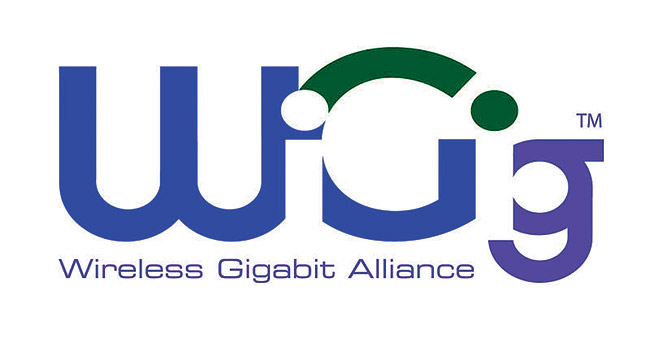Moving (Really Fast) To The WiGig
Earlier this year, the ultra-fast short-range wireless standard of 802.11ad, aka Wireless Gigabit (WiGig), was officially approved by the IEEE Standards Association. This opens the door to mainstream product development. In addition, the WiFi Alliance and Wireless Gigabit Alliance recently finalized the agreement that defines the consolidation of WiGig technology and certification development in Wi-Fi Alliance. This is a milestone that marks the completion of the collaboration between the two organizations. WiGig isn’t meant to replace the current-generation wireless networks, but provides 7Gbps speeds over short distances (i.e., between devices in a room over the 60GHz frequency, supplementing Wi-Fi).
Wilocity, a company on the WiGig Alliance board demonstrated early products at the last Consumer Electronics Show, including a tri-band reference product that can connect to GHz WiGig, 802.11ac Wi-Fi and current generation 2.5GHz/5GHz wireless. Additionally, last month, Dell announced an industry first with a WiGig Wireless Dock for the Dell Latitude 6430U Ultrabook ($249, available now). This dock supports up to two external displays with DisplayPort and HDMI and features ample peripheral connectivity via three USB ports, and an Audio In/Out port for voice over IP speeds of up to 4.6 gigabits per second.
“This is a significant and exciting moment for our members and our industry,” says Wi-Fi Alliance president and CEO Edgar Figueroa. “With 60 GHz efforts concentrated in one organization, we have the momentum, technology and members to deliver on the promise of WiGig technology.”
Wi-Fi Alliance will continue work begun with WiGig Alliance on features that extend WiGig capabilities beyond baseline connectivity to address a range of applications, from high-definition WiGig Display to peripheral connectivity and I/O cable replacement. Consolidation of the activities in Wi-Fi Alliance will deliver closely harmonized connectivity and application-layer solutions using the WiGig technology. Shortly after the groups announced plans to integrate, members of both organizations conducted the third WiGig interoperability testing event. These events will continue throughout the year and lead to the baseline interoperability certification program in early 2014.
WiGig technology has continued to gain momentum and will soon bring you closer to a future of seamless wireless connectivity, especially with WiGig solutions expanding on traditional Wi-Fi usages. Early 60 GHz implementations based on the WiGig specifications are entering the market now, and ABI Research forecasts that by 2016, annual shipments of devices with both Wi-Fi and WiGig technology will reach 1.8 billion.
There are no new product announcements at the moment, but this unified effort between the Wi-Fi Alliance and the WiGig Alliance will keep the developers busy in the coming years.






